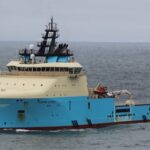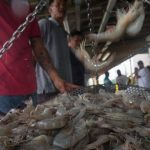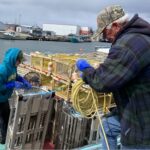Search Results for: halibut bycatch
North Pacific Halibut Bycatch Limit Could See 50 Percent Cut
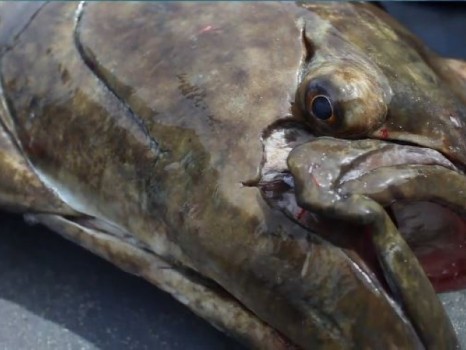 Halibut harvests have been on the decline in the Bering Sea for years, but the amount that trawlers and catcher-processors are allowed to take has stayed the same. Now, federal regulators have agreed to consider stiffer limits on halibut bycatch. This weekend, the voted to study the impact of cutting the 10 million-pound bycatch limit by as much as 50 percent. Read the rest here 16:17
Halibut harvests have been on the decline in the Bering Sea for years, but the amount that trawlers and catcher-processors are allowed to take has stayed the same. Now, federal regulators have agreed to consider stiffer limits on halibut bycatch. This weekend, the voted to study the impact of cutting the 10 million-pound bycatch limit by as much as 50 percent. Read the rest here 16:17
NPFMC to focus on halibut bycatch, new P-cod fishery during February 2nd – 10th Meeting in Seattle
 Halibut and cod in the Bering Sea and Aleutians Islands will be the focus for the North Pacific Fishery Management Council at its upcoming meeting, with some attention to the simmering issue of national monument designations that are chafing Alaska politicians and communities. The council will hold their first meeting of 2015 in Seattle Feb. 2-10. Read the rest here 08:35
Halibut and cod in the Bering Sea and Aleutians Islands will be the focus for the North Pacific Fishery Management Council at its upcoming meeting, with some attention to the simmering issue of national monument designations that are chafing Alaska politicians and communities. The council will hold their first meeting of 2015 in Seattle Feb. 2-10. Read the rest here 08:35
Alaska needs a major halibut bycatch reduction, by David Bayes
I’ve watched as longline and charter halibut allocations have declined steadily, and have long awaited the day when regulators would hold trawlers accountable for their waste.  Though the halibut stocks in the Bering Sea may seem unimportant to Anchorage and the Peninsula, the Northeastern migration of growing halibut means problems that begin in the Bering Sea will soon enough carry through to our area. Though the Bering Sea is a remote region, what precedent does Alaska set by allowing this blatant abuse of one of our most valuable and symbolic resources? Read the rest here 11:11
Though the halibut stocks in the Bering Sea may seem unimportant to Anchorage and the Peninsula, the Northeastern migration of growing halibut means problems that begin in the Bering Sea will soon enough carry through to our area. Though the Bering Sea is a remote region, what precedent does Alaska set by allowing this blatant abuse of one of our most valuable and symbolic resources? Read the rest here 11:11
Alaska’s Flatfish Trawl Fleet is an Important Economic Contributor Committed to Reducing Halibut Bycatch
By Chris Woodley 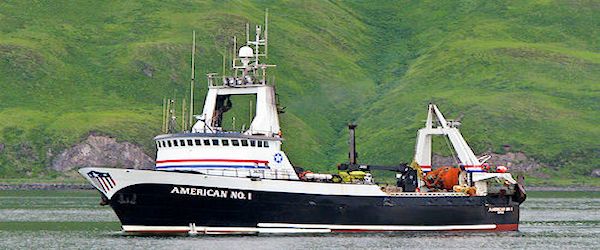 – With recent evidence showing a possible decrease in the Bering Sea halibut allocation this year, there has been a growing concern about Halibut bycatch, and discard discard mortality, ad what to do about it. Both groundfish, and halibut fishermen will be affected by the outcomes. Read the rest here 11:43
– With recent evidence showing a possible decrease in the Bering Sea halibut allocation this year, there has been a growing concern about Halibut bycatch, and discard discard mortality, ad what to do about it. Both groundfish, and halibut fishermen will be affected by the outcomes. Read the rest here 11:43
North Pacific Fishery Management Council members seek halibut bycatch cut
 After a motion failed at the North Pacific Fishery Management Council by a single vote with an Alaska delegate absent, another effort is underway to reduce halibut bycatch in the Bering Sea in the face of rapidly sinking catch limits for the directed fisheries. Interim Alaska Department of Fish and Game Commissioner Sam Cotten and the other five Alaska members of the North Pacific council signed a letter to National Marine Fisheries Service Assistant Administrator Eileen Sobeck on Dec. 18 asking for an emergency reduction in . Read the rest here 12:44
After a motion failed at the North Pacific Fishery Management Council by a single vote with an Alaska delegate absent, another effort is underway to reduce halibut bycatch in the Bering Sea in the face of rapidly sinking catch limits for the directed fisheries. Interim Alaska Department of Fish and Game Commissioner Sam Cotten and the other five Alaska members of the North Pacific council signed a letter to National Marine Fisheries Service Assistant Administrator Eileen Sobeck on Dec. 18 asking for an emergency reduction in . Read the rest here 12:44
Today: North Pacific council pursues halibut bycatch reductions
 The action came after public testimony from directed fishers calling for a reduction in bycatch, and an Advisory Panel report that asked for emergency regulations. This year, the directed fishery took a significant cut to the quota in Areas 4CDE, and another cut will likely occur next year. Those quotas are set by the Interntional Pacific Halibut Commission, and are based on the stock status. The council, however, is responsible for halibut bycatch in other fisheries. Read more here 20:22
The action came after public testimony from directed fishers calling for a reduction in bycatch, and an Advisory Panel report that asked for emergency regulations. This year, the directed fishery took a significant cut to the quota in Areas 4CDE, and another cut will likely occur next year. Those quotas are set by the Interntional Pacific Halibut Commission, and are based on the stock status. The council, however, is responsible for halibut bycatch in other fisheries. Read more here 20:22
Ludger (Lu) W. Dochtermann, Kodiak, AK Responds to NOAA TIGHTENS HALIBUT BYCATCH LIMITS FOR GULF OF ALASKA GROUNDFISH FISHERIES.
 To: Dr. James W. Balsiger, Regional Administrator, National Marine Fisheries Service, Alaska Region, & United States Commissioner, International Pacific Halibut Commission.
To: Dr. James W. Balsiger, Regional Administrator, National Marine Fisheries Service, Alaska Region, & United States Commissioner, International Pacific Halibut Commission.
Dear Jim: While NOAA puts a public spokesperson name on the news release for Amendment 95, let’s face facts — you are the Alaska administrator, and a voting member of the North Pacific Fishery Management Council. Accordingly, your news release was considered insensitive and not well received by disappointed GOA hook and line halibut fishermen: on line with other pro-trawler actions by the NPFMC and NMFS/NOAA. Amendment 95 is not fair and equitable in practice. You and the agency and NPFMC are not doing what is feasible, not obeying the UN FAO precautionary principle, not balancing the economic impact among sectors, not doing what is best for overall national benefit and not serving USA consumers. Read more here 14:30
NOAA NMFS tightens halibut bycatch limits for Gulf of Alaska groundfish fisheries
NOAA Fisheries is implementing a plan to tighten limits on the amount of halibut bycatch that could be caught in the commercial groundfish fisheries in the Gulf of Alaska (GOA). Read [email protected] 11:41
NPFMC talks crab, halibut bycatch
 SEATTLE — The North Pacific Fishery Management Council spent much of the day talking about Bering Sea bycatch, and agreed to move forward on one related discussion paper…The council also heard extensive public testimony on halibut bycatch in that same region this afternoon. Action is expected on that issue Saturday morning, with the advisory panel recommending another draft of the halibut bycatch discussion paper. Read more from Molly Dischner @alaskajournal.com The meeting will be broadcast LIVE at npfmc.webex.com. 08:16
SEATTLE — The North Pacific Fishery Management Council spent much of the day talking about Bering Sea bycatch, and agreed to move forward on one related discussion paper…The council also heard extensive public testimony on halibut bycatch in that same region this afternoon. Action is expected on that issue Saturday morning, with the advisory panel recommending another draft of the halibut bycatch discussion paper. Read more from Molly Dischner @alaskajournal.com The meeting will be broadcast LIVE at npfmc.webex.com. 08:16
NMFS proposes reduced halibut bycatch limits for Gulf of Alaska groundfish fisheries

NOAA Fisheries NMFS (according to the Federal Register) is seeking public input on a plan that would tighten limits on the amount of halibut bycatch that could be caught in the commercial groundfish fisheries in the Gulf of Alaska. The proposed fishery management plan amendment, “Amendment 95,” would minimize halibut bycatch in the Gulf of Alaska groundfish fisheries to the extent practicable while preserving the potential for the full harvest of groundfish in the GOA. [email protected] 15:11
Laine Welch at Fish Radio wrote about this notice, and it’s worth clicking the link .17:47
Halibut bycatch delivered to Kotzebue food bank – Feed the People!
The halibut is the bycatch from trawlers that is delivered to Kodiak. The delivery was arranged by Bainbridge Island Wash.-based Sea Share, an organization that redirects fish once thrown overboard to food banks.  said the group has donated more than 180 million seafood meals throughout the United States. continued@newsminer
said the group has donated more than 180 million seafood meals throughout the United States. continued@newsminer
David Bayes: Major bycatch reduction essential to halibut fishery
 In recent seasons, halibut users across the state have been tightening their belts. Biologists tell us that, though the total number of halibut in Alaska’s waters is at a very sustainable rate, those halibut are now growing more slowly than usual. Since halibut are regulated based upon the “total number of pounds in the sea,” rather than “total number of fish in the sea,” the longline and charter fleets are facing allocation cutbacks. Read the rest here 16:27
In recent seasons, halibut users across the state have been tightening their belts. Biologists tell us that, though the total number of halibut in Alaska’s waters is at a very sustainable rate, those halibut are now growing more slowly than usual. Since halibut are regulated based upon the “total number of pounds in the sea,” rather than “total number of fish in the sea,” the longline and charter fleets are facing allocation cutbacks. Read the rest here 16:27
Opinion: The tragic mismanagement of bycatch in Alaska
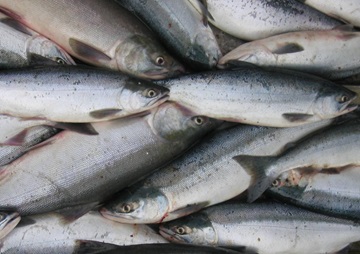 The commissioner of the Alaska Department of Fish & Game’s recent opinion piece on bycatch would make for good comedy if the topic wasn’t so serious. Doug Vincent-Lang extolled the North Pacific Fishery Management Council’s handling of bycatch in trawl fisheries off the coast of Alaska. As examples, he mentioned existing bycatch caps for chinook salmon and halibut bycatch measures that are not yet in effect. Other than that, here are the council “actions” he espouses. The council, of which he is a key member, has “initiated an analysis” concerning caps on chum bycatch, is “considering further fishing restrictions” related to crab in the Bering Sea and is “evaluating whether further protections are needed” for Tanner crab in the Gulf. He also notes that the council “support(s) further research” into the causes of the declines in these seminal Alaska fisheries stocks. >>click to read<< 12:29
The commissioner of the Alaska Department of Fish & Game’s recent opinion piece on bycatch would make for good comedy if the topic wasn’t so serious. Doug Vincent-Lang extolled the North Pacific Fishery Management Council’s handling of bycatch in trawl fisheries off the coast of Alaska. As examples, he mentioned existing bycatch caps for chinook salmon and halibut bycatch measures that are not yet in effect. Other than that, here are the council “actions” he espouses. The council, of which he is a key member, has “initiated an analysis” concerning caps on chum bycatch, is “considering further fishing restrictions” related to crab in the Bering Sea and is “evaluating whether further protections are needed” for Tanner crab in the Gulf. He also notes that the council “support(s) further research” into the causes of the declines in these seminal Alaska fisheries stocks. >>click to read<< 12:29
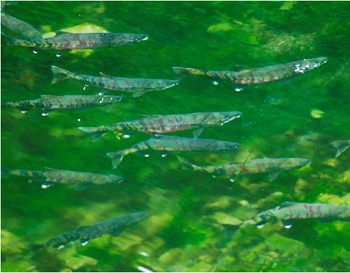
Alaska task force’s final report calls for new rules and more research to address seafood bycatch
Gov. Mike Dunleavy, who created the task force a year ago, released the group’s final report late Thursday. “I look forward to working with task force members and stakeholders to do everything we can to get more fish to return to Alaska’s waters,” Dunleavy said in a statement. The collapse of salmon runs vital to western Alaska — and public complaints that too many salmon were being intercepted at sea before returning to spawning grounds — triggered the creation of the Alaska Bycatch Task Force. However, its work extended to bycatch of various crab species and halibut. To some degree, bycatch is unavoidable, the task force said. >click to read< 09:10

Bycatch task force works to refine mission ahead of November deadline
Bycatch is when fishing vessels catch something they’re not targeting. It could be tanner crab caught in a black cod pot, or halibut scooped up in a pollock trawl net. It’s been an incendiary issue in Alaska’s fisheries for decades. Now, as stocks of crab, salmon and halibut decline, trawl fisheries have come under fire for their role, which represents the vast majority of incidental catch in and around Alaska. The governor’s office took notice. Gov. Mike Dunleavy established a task force to review bycatch late last year with a deadline of November to submit its recommendations. But during that time, the Alaska Bycatch Review Task Force also has to establish its own priorities, break into subcommittees, and decide what it’s going to focus on before its mandate expires in just nine months. And there’s a lot of information to sort through already as it plays catch-up. >click to read< 11:01
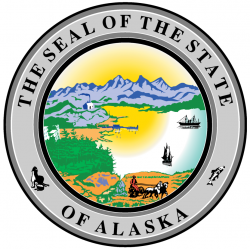
Dunleavy Announces Alaska Bycatch Review Task Force Members
Governor Mike Dunleavy released the list of eleven Alaskans who will serve on the Alaska Bycatch Review Task Force. The mission of the task force is to better understand the unintended bycatch of fish such as halibut and salmon caught in both State and federal waters. The two remaining seats on the task force will be non-voting seats filled by members of the Alaska Legislature. “The 11 Alaskans who stepped forward to serve on the Alaska Bycatch Review Task Force represent key stakeholder groups and are recognized for not only their knowledge of fisheries, but their commitment to sustaining the resource for generations of Alaskans to come.” >click to read< 07:50
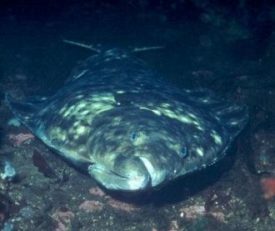
NPFMC ties limits on Bering Sea trawlers to halibut abundance
The council that manages fishing in federal waters voted to link groundfish trawl fishing in the Bering Sea and Aleutian Islands to halibut abundance today. The action caps, at least for now, a six-year debate about curbing halibut bycatch in Alaska. For many who have been following that debate, the decision comes as a surprise, since it’s expected to deal what trawlers say is a crushing blow to their fishery. >click to read< 09:10

Dunleavy administration announces formation of bycatch task force
“We’ve had a reduction in or closure of the crab fisheries in the Bering Sea. The [North Pacific Fishery Management] Council is discussing how to deal with halibut bycatch, and I think there’s a lot of perception that there are bycatch issues associated with what’s happened with salmon in Western Alaska systems,” said Alaska Fish & Game Commissioner Doug Vincent-Lang. And, he says, his boss has taken notice. “I think the governor was hearing loud and clear that there was just a lot of noise around the issue of bycatch,” >click to read< 12:52

International Pacific Halibut Commission cuts 2020 harvest levels for US waters
Amid ongoing stock declines and concerns about commercial bycatch, the International Pacific Halibut Commission opted to cut allocations in Southcentral and Southeast Alaska for 2020.,, U.S. Commissioner Chris Oliver said he recognized that there maybe some dissatisfaction on the U.S. side,, Canadian Commissioner Peter DeGreef said he objected to the level of fishing intensity as well, saying that without a cut,,, >click to read< 10:06
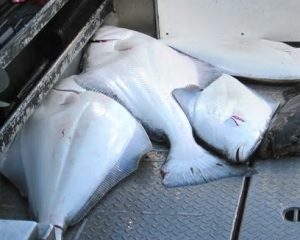
Review of Atlantic halibut survey raises sustainability questions
For more than two decades, Atlantic halibut fishermen have baited their hooks and dropped them to the ocean bottom off Nova Scotia and Newfoundland as part of a collaboration between the fishing industry and the Department of Fisheries and Oceans. The annual May to July halibut longline survey is used to predict halibut abundance in a thriving fishery worth $60 million. Dalhousie University biology student Isabelle Hurley wanted to know if the data told another story. She looked at what else was caught — so-called bycatch — in the survey between 1998 and 2016. >click to read<10:32
BC Halibut Fishermen Accuse Global NEWS of Irresponsible Journalism with Oceana Canada’s Fake News
 “Global NEWS’ May 5th reporting on Canada’s Pacific commercial halibut fishery was irresponsible fake news, says Chris Sporer, Executive Manager of the Pacific Halibut Management Association of BC (PHMA), an organization representing commercial halibut fishermen in the province. “Global NEWS made no attempt to contact the industry or to get the facts, and then used stock video footage that has nothing to do with our fishery,” notes Sporer. The Global NEWS report was click here>prompted by an Oceana Canada report on bycatch in Canada’s commercial fisheries. PHMA and its members disagree with the conclusions of the report. For the BC halibut fishery, the report relied on a data set that is a decade old and incomplete. As a result, the data could not be fully analyzed and is misinterpreted. click here to read the story 16:09
“Global NEWS’ May 5th reporting on Canada’s Pacific commercial halibut fishery was irresponsible fake news, says Chris Sporer, Executive Manager of the Pacific Halibut Management Association of BC (PHMA), an organization representing commercial halibut fishermen in the province. “Global NEWS made no attempt to contact the industry or to get the facts, and then used stock video footage that has nothing to do with our fishery,” notes Sporer. The Global NEWS report was click here>prompted by an Oceana Canada report on bycatch in Canada’s commercial fisheries. PHMA and its members disagree with the conclusions of the report. For the BC halibut fishery, the report relied on a data set that is a decade old and incomplete. As a result, the data could not be fully analyzed and is misinterpreted. click here to read the story 16:09
Halibut stock stable, flat harvest likely
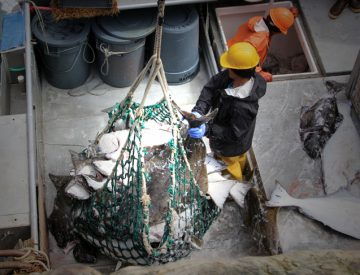 Stocks have stabilized and bycatch is as low as it’s been since 1960, however the halibut quota for next year will edge down after being raised for the first time in years in 2016. The International Pacific Halibut Commission held its interim meeting in Seattle Nov. 29-30 to review the 2016 catch, status of the stock, and to recommend how much halibut fishermen will be able to take in 2017. Overall, biologists and managers gave a view of a responsible group of users responding well to a trough in the historical ups and downs of halibut abundance, which has flattened after a decade of downward movement. IPHC biologist Dr. Ian Stewart painted a more secure picture of halibut than the last two years have seen, emphasizing decreased bycatch and a firm outlook for abundance. “I think it’s pretty clear that we’ve seen the stock stabilize,” Stewart said. Read the story here 15:42
Stocks have stabilized and bycatch is as low as it’s been since 1960, however the halibut quota for next year will edge down after being raised for the first time in years in 2016. The International Pacific Halibut Commission held its interim meeting in Seattle Nov. 29-30 to review the 2016 catch, status of the stock, and to recommend how much halibut fishermen will be able to take in 2017. Overall, biologists and managers gave a view of a responsible group of users responding well to a trough in the historical ups and downs of halibut abundance, which has flattened after a decade of downward movement. IPHC biologist Dr. Ian Stewart painted a more secure picture of halibut than the last two years have seen, emphasizing decreased bycatch and a firm outlook for abundance. “I think it’s pretty clear that we’ve seen the stock stabilize,” Stewart said. Read the story here 15:42
Many words created few changes to the Gulf of Alaska bycatch reduction package the North Pacific Fishery Management Council is pondering.
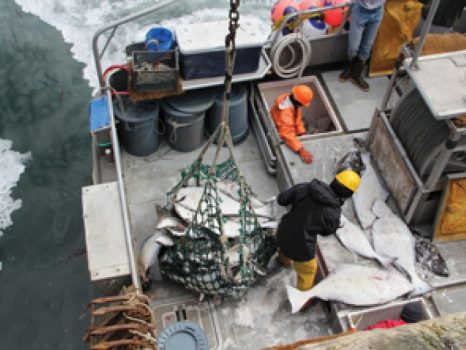 At its June meeting in Kodiak, the council held another session dedicated to the plan, which would enact one of several options aimed at reducing the amount of halibut and chinook salmon bycatch in the Gulf of Alaska groundfish fishery. The council moved three alternatives into a public scoping process but before making adjustments to alternatives, the overarching goals and objectives debate spurred a two-hour word battle among members that the chair found unproductive. Not only should the plan reduce bycatch, as the purpose and needs statement says, but should also “promote increased utilization of both target and secondary species while minimizing economic barriers for new participants and limiting harvest privileges.” The council lingo is meant to protect new entrant fishermen from consolidation and overwhelming entry costs to purchase fishing quota. (This is a long article with lots of info.) Read the story here 20:44
At its June meeting in Kodiak, the council held another session dedicated to the plan, which would enact one of several options aimed at reducing the amount of halibut and chinook salmon bycatch in the Gulf of Alaska groundfish fishery. The council moved three alternatives into a public scoping process but before making adjustments to alternatives, the overarching goals and objectives debate spurred a two-hour word battle among members that the chair found unproductive. Not only should the plan reduce bycatch, as the purpose and needs statement says, but should also “promote increased utilization of both target and secondary species while minimizing economic barriers for new participants and limiting harvest privileges.” The council lingo is meant to protect new entrant fishermen from consolidation and overwhelming entry costs to purchase fishing quota. (This is a long article with lots of info.) Read the story here 20:44
Cotten, council get a bycatch reduction plan earful from Gulf of Alaska trawlers
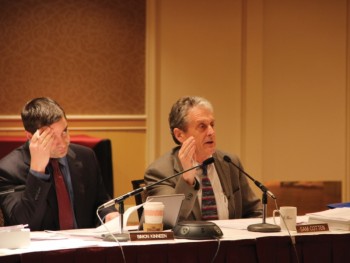 An administrative push to keep fishing jobs in coastal communities is butting heads with the trawl industry claiming they provide the jobs in the first place. The North Pacific Fishery Management Council will continue studying a bycatch reduction plan unpopular with Gulf of Alaska trawlers. The option, known as Alternative 3, would allocate individual bycatch caps to groundfish vessels in the Gulf of Alaska rather than the target species. The council is making changes at the fleet’s insistence. The council passed a series of chinook salmon bycatch limits and halibut bycatch reductions in 2011 and 2012, leading to bycatch-related shutdowns of the trawl fleet. Read the rest here 13:23
An administrative push to keep fishing jobs in coastal communities is butting heads with the trawl industry claiming they provide the jobs in the first place. The North Pacific Fishery Management Council will continue studying a bycatch reduction plan unpopular with Gulf of Alaska trawlers. The option, known as Alternative 3, would allocate individual bycatch caps to groundfish vessels in the Gulf of Alaska rather than the target species. The council is making changes at the fleet’s insistence. The council passed a series of chinook salmon bycatch limits and halibut bycatch reductions in 2011 and 2012, leading to bycatch-related shutdowns of the trawl fleet. Read the rest here 13:23
Bycatch spike, meeting spur trawl stand down
 Gulf of Alaska trawlers are flocking to a meeting in Portland, leaving behind a halibut bycatch situation the North Pacific Fishery Management Council is attempting to fix. The trawlers have complaints with council process, but are also standing down from a halibut bycatch spike resulting from a pollock price dispute with area processors. Industry sources say the stand down was already underway prior to a letter from prominent Gulf of Alaska trawl organizations on Jan. 28 asking for the council-related stand down. Trawl industry representatives said the two stand downs are unrelated. Thirty-four Central Gulf of Alaska trawlers and 19 Western Gulf of Alaska trawlers have agreed not to fish from Feb. 3-6, showing solidarity with those trawlers traveling to Portland to testify at the council meeting. Read the rest here 15:44
Gulf of Alaska trawlers are flocking to a meeting in Portland, leaving behind a halibut bycatch situation the North Pacific Fishery Management Council is attempting to fix. The trawlers have complaints with council process, but are also standing down from a halibut bycatch spike resulting from a pollock price dispute with area processors. Industry sources say the stand down was already underway prior to a letter from prominent Gulf of Alaska trawl organizations on Jan. 28 asking for the council-related stand down. Trawl industry representatives said the two stand downs are unrelated. Thirty-four Central Gulf of Alaska trawlers and 19 Western Gulf of Alaska trawlers have agreed not to fish from Feb. 3-6, showing solidarity with those trawlers traveling to Portland to testify at the council meeting. Read the rest here 15:44
Factory trawlers praised for halibut conservation
 What a difference a year makes for the halibut bycatch controversy in the Bering Sea at the December meetings of the North Pacific Fishery Management Council in Anchorage. The flatfish factory trawlers, vilified for much of this year, reported vigorous and voluntary efforts at halibut conservation, and even received praise from the Pribilofs. Their zeal was prompted by what might be termed resolution number two-by-four of the fish council last summer, which slashed halibut bycatch by 25 percent. “I’m glad what is happening now is happening,” said Swetzof, who was furious when the issue first arose last year,,, Read the article here 18:32
What a difference a year makes for the halibut bycatch controversy in the Bering Sea at the December meetings of the North Pacific Fishery Management Council in Anchorage. The flatfish factory trawlers, vilified for much of this year, reported vigorous and voluntary efforts at halibut conservation, and even received praise from the Pribilofs. Their zeal was prompted by what might be termed resolution number two-by-four of the fish council last summer, which slashed halibut bycatch by 25 percent. “I’m glad what is happening now is happening,” said Swetzof, who was furious when the issue first arose last year,,, Read the article here 18:32
User conflicts over halibut, salmon on horizon for 2016
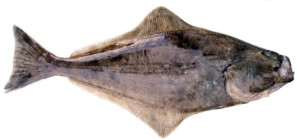 The year about to end saw the beginnings of some fisheries regulations and legal battles that will either resolve or present further issues in 2016. Halibut has dominated the federal fisheries agenda for the North Pacific Fishery Management Council, which oversees the Exclusive Economic Zone from 3 to 200 miles off the coast. Shrinking halibut stocks and dual management have collided to produce a fishery bitterly divided among bycatch users, directed users, and charter anglers struggling to make ends meet with fewer legally harvestable fish. Read the article here 16:04
The year about to end saw the beginnings of some fisheries regulations and legal battles that will either resolve or present further issues in 2016. Halibut has dominated the federal fisheries agenda for the North Pacific Fishery Management Council, which oversees the Exclusive Economic Zone from 3 to 200 miles off the coast. Shrinking halibut stocks and dual management have collided to produce a fishery bitterly divided among bycatch users, directed users, and charter anglers struggling to make ends meet with fewer legally harvestable fish. Read the article here 16:04
NPFMC Introduces New Alternative After October Meeting for Gulf trawl bycatch management
 The Kodiak Fisheries Workgroup sent a letter of community input to the North Pacific Fishery Management Council before the council’s meeting in early October. The letter focused on the gulf trawl bycatch management issue. “The new alternative does not do catch shares on those fisheries resources such as pollock, but provides a share instead of the bycatch quota, which is either halibut or salmon. Chinook salmon. And so, if you’re given a share of that bycatch, you can take that bycatch share into a co-op.” Read the article here 12:29
The Kodiak Fisheries Workgroup sent a letter of community input to the North Pacific Fishery Management Council before the council’s meeting in early October. The letter focused on the gulf trawl bycatch management issue. “The new alternative does not do catch shares on those fisheries resources such as pollock, but provides a share instead of the bycatch quota, which is either halibut or salmon. Chinook salmon. And so, if you’re given a share of that bycatch, you can take that bycatch share into a co-op.” Read the article here 12:29
Halibut Dumping Stirs Fight Among Fishing Fleets In Alaska

The Rebecca Irene can’t keep that halibut: Trawlers aren’t supposed to catch it, and the law requires any halibut that are caught be thrown overboard. If the trend doesn’t change, fishermen in St. Paul face the potential of a complete shutdown. With his community’s future on the line, Swetsov choked up as he testified this week before the NPFMC, which regulates bycatch in federal waters off of Alaska. “I’m extremely angry that we’re here today,” he says. Read the rest here 11:57
Editorial: Halibut population is wobbling
 Mismanagement of bycatch — fish caught by accident while boats net other permitted species — is an offensive waste most recently highlighted by a May 30 story in the Seattle Times. The Times’ focus is on the (tinyurl.com/p9vr49l), but the issues involved are familiar to most commercial fishermen. Longstanding bycatch rules are based on distrust of fishermen and somewhat logical, but obviously counterproductive, notions about how to discourage “accidental-on-purpose” behavior. Read the rest here 19:17
Mismanagement of bycatch — fish caught by accident while boats net other permitted species — is an offensive waste most recently highlighted by a May 30 story in the Seattle Times. The Times’ focus is on the (tinyurl.com/p9vr49l), but the issues involved are familiar to most commercial fishermen. Longstanding bycatch rules are based on distrust of fishermen and somewhat logical, but obviously counterproductive, notions about how to discourage “accidental-on-purpose” behavior. Read the rest here 19:17
































